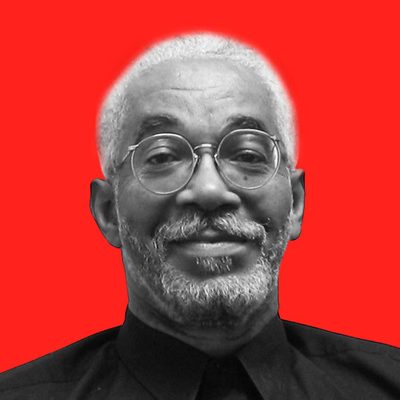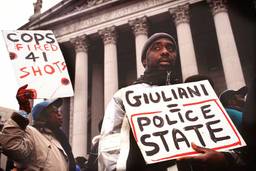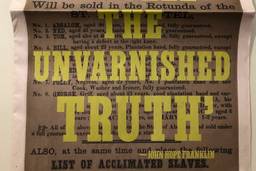The war on terrorism declared by the United States on radical Islamists is little more than a proxy battle in a war between two cults.
That is the provocative theory emerging from two award-winning investigative journalists from both sides of the Atlantic: Seymour Hersh, a Pulitzer Prize-winning reporter for The New Yorker, and Adam Curtis, a well-known British documentary filmmaker and producer for the British Broadcasting Corp. (BBC).
They are making the case that current animosities between the West and the Islamic world are being fueled by the narrow agendas of two cults: American neoconservatives and al Qaeda.
It was Hersh’s exposé on the Abu Ghraib torture scandal in The New Yorker in April 2004 that essentially forced CBS to air its “60 Minutes” program on the atrocities, which it had been sitting on for weeks. A veteran reporter with hard-earned access to the internal dynamics of foreign policy formation, Hersh also has closely followed the rise of the neoconservative ideologues that now dominate the U.S. foreign policy apparatus.
At a recent speech before the Steven Wise Free Synagogue in New York, Hersh said, “The amazing thing is, we’ve been taken over basically by a cult, eight or nine neoconservatives have somehow grabbed the government.” He didn’t go into the whys and wherefores of this takeover (he has done so, exhaustively, in a New Yorker piece published May 5, 2003), but he relayed his distress at the results.
“You do have to wonder what democracy is when it comes down to a few men in the Pentagon and a few men in the White House having their way,” he told the Synagogue crowd.
Hersh has been chronicling this takeover in a series of New Yorker articles, the latest of which was a January 24 piece about Secretary of Defense Donald Rumsfeld’s takeover of intelligence functions usually handled by the CIA.
Hersh argues that the neocons’ worldview was shaped in large part by the theories of the late Leo Strauss, who taught political philosophy at the University of Chicago in the ’40s and ’50s. Strauss believed the world to be a hostile place where democracies live in constant danger from hostile elements abroad, Hersh writes, and where those in power often have to deceive their own uncomprehending citizens in order to protect the nation.
He warns that this coterie of Straussians is taking America down a dangerous path that will be hard to reverse. The major features of this path are neocolonialism in the guise of evangelical democracy and hostility to Islam.
Through the influence of this cult, most Americans have been convinced that the modern West is being seriously threatened by a parade of ruthless Islamist terrorists. The Islamists who fit that description are grateful for this grandiose image: the larger their shadow, the greater the terror.
But this notion of a menacing monolith, implacably opposed to Western modernism and threatening mayhem at every airport, is neatly demolished in Curtis’ BBC film, The Power of Nightmares: The Rise of the Politics of Fear. The three-hour documentary, which first aired on the BBC last October and was repeated in January, makes a compelling argument that much of what we think we know about international terrorism is a fantasy that has been exaggerated and exploited by politicians.
Curtis attacks the conventional wisdom that there is a well-coordinated network of international terrorists seeking to harm the West. In fact, Curtis argues, radical Islamists were fragmented and losing favor among the Muslim masses until they began to attack the West as a last resort.
This strategy attracted a loose association of disillusioned Islamist militants, he says, but “beyond this small group, bin Laden had no formal organization — until the Americans invented one for him.” Curtis argues that the FBI gave bin Laden’s rag-tag group the name “al Qaeda” because of legal requirements; a government strategy to prosecute bin Laden in 2001 via the Racketeer Influenced and Corrupt Organization laws required the existence of an actual organization.
While the BBC documentary does acknowledge there are Islamist fanatics capable of odious acts of terrorism, it vigorously opposes the view that such freelance radicals comprise an organized terrorist network.
“Wherever one looks for this al Qaeda organization, from the mountains of Afghanistan to the ‘sleeper cells’ in America, the British and Americans are chasing a phantom enemy,” Curtis says.
The British filmmaker argues that the neoconservatives and Islamist radicals are symbiotic rivals, both with a stake in bolstering the image of the other. Both groups have changed the world, he notes, “but not in the way that either intended. Together they created today’s nightmare vision of a secret, organized evil that threatens the world.”
Salim Muwakkil is a senior editor of In These Times and host of “The Salim Muwakkil Show” on radio station WVON-AM in Chicago. Muwakkil was also contributing columnist for both the Chicago Sun-Times (1993 – 1997) and the Chicago Tribune (1998 – 2005). He is also a co-founder of Pacifica News’ network daily “Democracy Now” program and served as an adjunct professor at Northwestern University, University of Illinois, the Art Institute of Chicago and Chicago’s Columbia College.









